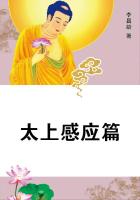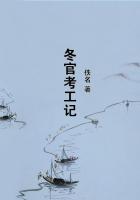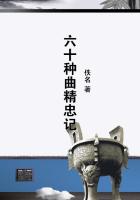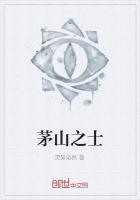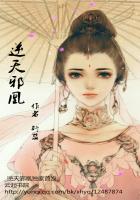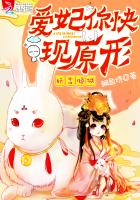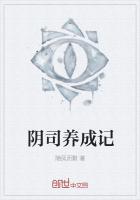SS 44.Fine artThere is no science of the beautiful, but only a critique.Nor, again, is there an elegant (schone) science, but only a fine (schone) art.For a science of the beautiful would have to determine scientifically, i.e., by means of proofs, whether a thing was to be considered beautiful or not; and the judgement upon beauty, consequently, would, if belonging to science, fail to be a judgement of taste.As for a beautiful science-a science which, as such, is to be beautiful, is a nonentity.For if, treating it as a science, we were to ask for reasons and proofs, we would be put off with elegant phrases (bons mots).What has given rise to the current expression elegant sciences is, doubtless, no more than this, that common observation has, quite accurately, noted the fact that for fine art, in the fulness of its perfection, a large store of science is required, as, for example, knowledge of ancient languages, acquaintance with classical authors, history, antiquarian learning, etc.Hence these historical sciences, owing to the fact that they form the necessary preparation and groundwork for fine art, and partly also owing to the fact that they are taken to comprise even the knowledge of the products of fine art (rhetoric and poetry), have by a-confusion of words, actually got the name of elegant sciences.
Where art, merely seeking to actualize a possible object to the cognition of which it is adequate, does whatever acts are required for that purpose.then it is mechanical.But should the feeling of pleasure be what it has immediately in view, it is then termed aesthetic art.As such it may be either agreeable or fine art.The description "agreeable art" applies where the end of the art is that the pleasure should accompany the representations considered as mere sensations, the description "fine art" where it is to accompany them considered as modes of cognition.
Agreeable arts are those which have mere enjoyment for their object.
Such are all the charms that can gratify a dinner party:
entertaining narrative, the art of starting the whole table in unrestrained and sprightly conversation, or with jest and laughter inducing a certain air of gaiety.Here, as the saying goes, there may be much loose talk over the glasses, without a person wishing to be brought to book for all he utters, because it is only given out for the entertainment of the moment, and not as a lasting matter to be made the subject of reflection or repetition.(Of the same sort is also the art of arranging the table for enjoyment, or, at large banquets, the music of the orchestra-a quaint idea intended to act on the mind merely as an agreeable noise fostering a genial spirit, which, without any one paying the smallest attention to the composition, promotes the free flow of conversation between guest and guest.) In addition must be included play of every kind which is attended with no further interest than that of ****** the time pass by unheeded.
Fine art, on the other hand, is a mode of representation which is intrinsically final, and which, although devoid of an end, has the effect of advancing the culture of the mental powers in the interests of social communication.
The universal communicability of a pleasure involves in its very concept that the pleasure is not one of enjoyment arising out of mere sensation, but must be one of reflection.Hence aesthetic art, as art which is beautiful, is one having for its standard the reflective judgement and not organic sensation.
SS 45.Fine art is an art, so far as it has at the same time the appearance of being nature.
A product of fine art must be recognized to be art and not nature.Nevertheless the finality in its form must appear just as free from the constraint of arbitrary rules as if it were a product of mere nature.Upon this feeling of ******* in the play of our cognitive faculties-which play has at the same time to be final rests that pleasure which alone is universally communicable without being based on concepts.Nature proved beautiful when it wore the appearance of art; and art can only be termed beautiful, where we are conscious of its being art, while yet it has the appearance of nature.
For, whether we are dealing with beauty of nature or beauty of art, we may make the universal statement: That is beautiful which pleases in the mere estimate of it (not in sensation or by means of a concept).Now art has always got a definite intention of producing something.Were this "something," however, to be mere sensation (something merely subjective), intended to be accompanied with pleasure, then such product would, in our estimation of it, only please through the agency of the feeling of the senses.On the other hand, were the intention one directed to the production of a definite object, then, supposing this were attained by art, the object would only please by means of a concept.But in both cases the art would please, not in the mere estimate of it, i.e., not as fine art, but rather as mechanical art.
Hence the finality in the product of fine art, intentional though it be, must not have the appearance of being intentional; i.e., fine art must be clothed with the aspect of nature, although we recognize it to be art.But the way in which a product of art seems like nature is by the presence of perfect exactness in the agreement with rules prescribing how alone the product can be what it is intended to be, but with an absence of laboured effect (without academic form betraying itself), i.e., without a trace appearing of the artist having always had the rule present to him and of its having fettered his mental powers.
SS 46.Fine art is the art of genius.
Genius is the talent (natural endowment) which gives the rule to art.Since talent, as an innate productive faculty of the artist, belongs itself to nature, we may put it this way: Genius is the innate mental aptitude (ingenium) through which nature gives the rule to art.

